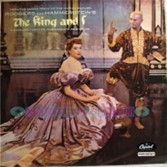Getting to Know You, Getting to Know All about You

One issue constantly surfaces these days during our presentations to leaders of organizations and, in all candor, it’s an issue which consumes those of us who are helping best-practice companies both attract and retain top talent. That issue is … “you must know your employees well, better than they know themselves.” Much like the song “Getting to Know You” from the 1951 Rodgers and Hammerstein musical, The King and I, it’s all about getting to know more about your most precious asset – your employees.
Knowing an employee well is a key element of performance management and we are stressing that heavily as we help organizations shed some of their traditional tools and practices. These outdated tools include backward-looking employee appraisals which occur infrequently and are usually poorly done. Instead of that approach, we now place our highest priority on coaching, a development-based strategy which looks forward by setting goals and establishing a plan to achieve them. This forward-looking kind of management asks coaching leaders to work with employees to set and reach their goals after first assuring their goals are aligned with the company mission.
A fundamental fact to acknowledge about this kind of coaching for performance is that although employees are alike in many key areas, they are also different in significant ways. No single coaching or managing style fits all employees. This is a difficult idea for many managers to grasp; and, it can be overwhelming if a conscientious manager believes he must memorize the names of his employees’ children and spouses.
While knowing all those names is a nice thing to do, it is not imperative. But getting to know employees is imperative and it’s less time-consuming and more enjoyable than playing the churn game – hiring employees for jobs they don’t fit, leaving them to founder, then replacing them six months or a year later, and then wondering what happened.
Let’s use “Fred” as an example of someone we need to get to know better. Through the use of our PXT Select assessment, we’ll gain insight to Fred’s thinking style (he has a high learning composite score), occupational interests (technical), and behavioral traits (he’s relatively low on his need to control others or the situation he’s in and he’s easy to manage since he’s high on the conformity scale). With that information, we’ll also be able to compare him to a Performance Model to determine fit between him and the demands of a given position (in this case – an engineer). What we can also know is:
- How Fred fits with the rest of the team and
- How Fred fits with his manager/coach.
Armed with the knowledge of all of Fred’s competencies, we can comprehend fully if Fred can do what we want him to do and whether or not he’ll work well with the people around him. Knowing all of these things allows Fred’s manager to form a mentoring/coaching strategy that will close the gaps, if any, between his capabilities and job requirements.
Now let’s look at the phrase “one size does not fit all” as it applies to managing people. Perhaps another way to say this is that we shouldn’t generalize or make assumptions about people based on age, gender, ethnicity, or any of the other qualities which make Fred appear similar to “Joe”. As similar as some employees appear to be, to presume that any two women, two men, two young people, or two people of the same ethnic origin will think and act like each other because they share some of the same traits is a foolish oversimplification. That kind of thinking ensures we will be mired in yesterday’s management rut.
Here are some ideas about getting the right people into your organization from the start and then getting to know them:
- Know your organization’s culture well enough to talk about it. This includes the business strategy, the vision of top leaders, how employees view one another, and how workers treat each other.
- Communicate with employees. Go beyond regular meetings and memos. Take frequent walks through all departments. Find out what is going on by talking to people. Figure out what they are thinking. How? Ask
- Ask for feedback about resources and other critical issues. Keep the channels of communication open and flowing freely.
- If you want your employee rewards program to be effective, knowing your people is essential. Instead of planning rewards around the CEO’s interests and needs, find out what workers want. Special incentives should be tailored to recognize the person who performed well.
- People change. So do their job interests, their energy levels, and their job competencies. It’s the coach’s job to know them at every stage in their lives and to change the motivation program to match their changing skills and interests.
- Know yourself. It’s much easier to understand other people if you get to know the inner you first, the things that make you tick, the job tasks that you enjoy and the ones that you do not, how you work with teams, and your compatibility with others.
So, are you serious about getting to know someone on your staff better? If so, we’d like to help you. For those who call, email, or fill out the form below, we’ll provide a complementary PXT Select assessment for you and one member of your team.
